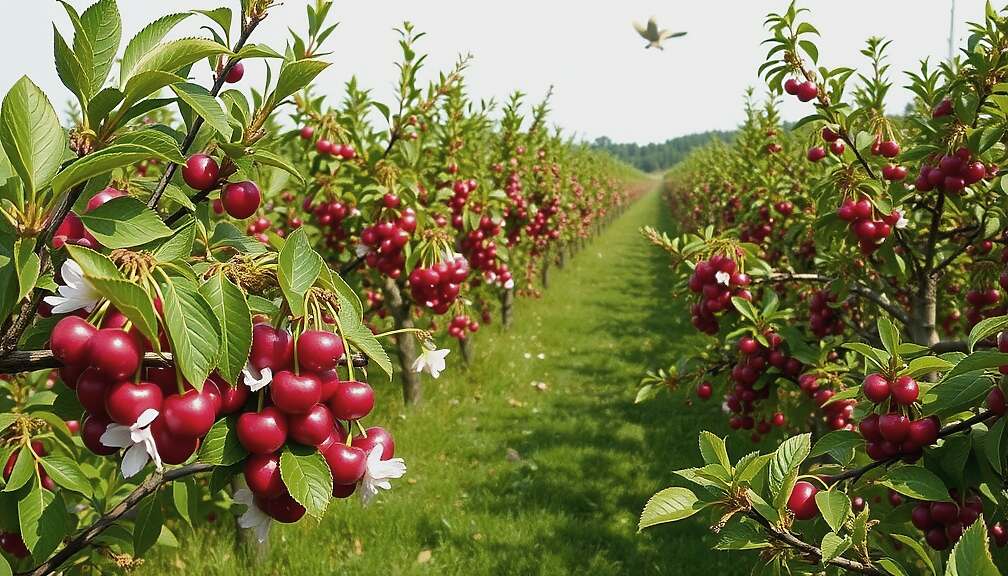Germany’s fruit growers have reported a strong cherry harvest for the summer of 2025. According to finalized estimates released Monday by the Federal Statistical Office (Destatis), a total of 47,100 tonnes of cherries were harvested. This comprises 79 percent (37,300 tonnes) of sweet cherries and 21 percent (9,800 tonnes) of sour cherries.
The 2025 harvest marks a 4.2 percent increase compared to the ten-year average from 2015 to 2024, which stood at 45,200 tonnes. Furthermore, production rose significantly compared to the significantly below-average total yield of 35,400 tonnes in the previous year, resulting in an additional 11,700 tonnes – a 33.1 percent increase.
The finalized estimate for sweet cherry production reached 37,300 tonnes, a substantial rise of 9,400 tonnes – representing a 33.6 percent improvement over the unusually low yield of the previous year, attributed to weather conditions. Compared to the ten-year average of 32,900 tonnes, fruit growers registered an increase of 4,400 tonnes, or 13.3 percent. The successful sweet cherry harvest was facilitated by mild weather conditions during the blossoming period and a lack of damaging frost or hail events across most growing regions.
Sweet cherries are cultivated across 5,700 hectares in Germany. Baden-Württemberg leads in cultivation with 2,600 hectares, accounting for 47 percent of Germany’s total sweet cherry production, yielding 17,600 tonnes. Lower Saxony follows with 5,000 tonnes produced on 480 hectares. While Rhineland-Palatinate (660 hectares) and Bavaria (540 hectares) have larger areas dedicated to sweet cherry cultivation, their yields were comparatively lower at 3,700 and 1,800 tonnes, respectively.
Compared to the previous year, the sweet cherry harvest in Baden-Württemberg was slightly lower, down by 250 tonnes (-1 percent). However, Lower Saxony, Rhineland-Palatinate and Bavaria all significantly surpassed their previous year’s yields, with increases of 2,000 tonnes (+67 percent), 76 percent and 30 percent, respectively. These regional variances are attributed to the fact that Baden-Württemberg experienced an exceptionally good harvest in 2024, while other regions faced weather-related setbacks.
The finalized estimate for sour cherry production reached 9,800 tonnes, exceeding the very weather-affected yield of only 7,500 tonnes in the previous year by 31.3 percent. An initial, preliminary harvest estimate in June of 11,700 tonnes briefly suggested that the average of the past ten years (12,300 tonnes) might be nearly reached, but the final amount ultimately fell 20.0 percent short. Contributing to the comparatively lower yield, besides weather influences, is a reduction in the area dedicated to sour cherry cultivation by 25 percent, from 2,000 to 1,500 hectares.
Rhineland-Palatinate leads in sour cherry cultivation with 460 hectares, followed by Saxony (300 hectares) and Baden-Württemberg (240 hectares). Rhineland-Palatinate yielded the largest harvest at 2,700 tonnes (+40 percent compared to the previous year), followed by Thuringia (1,900 tonnes, +179 percent) and Saxony (1,800 tonnes, +1,249 percent). The changes compared to the previous year highlight the particularly challenging harvest year of 2024, with regional near-complete crop failures in sour cherries and other tree fruits, particularly in some eastern German states.




